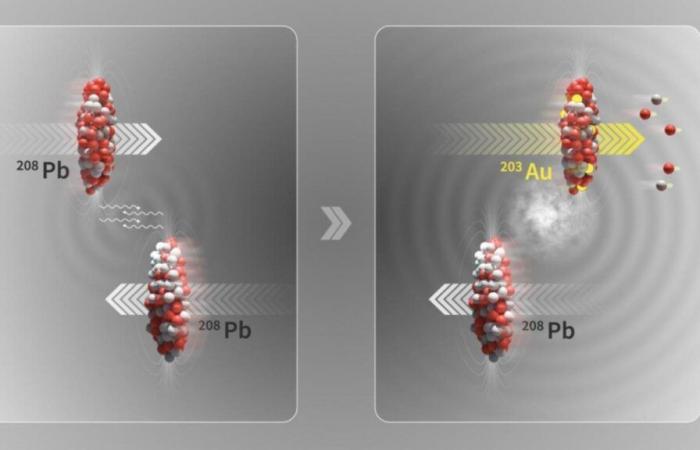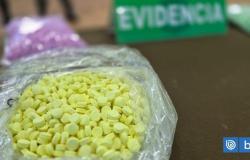For centuries the alchemists tried to find a “Philosopher’s stone” capable of turning lead into golda transmutation that has finally been achieved, although at subatomic levels and in a fraction of a second, in the large Hadron collider (LHC) of the European Particle Physics Center (CERN).
As explained on Thursday a statement from the institution, this phenomenon has been achieved through the interaction of lead nuclei that travel through the 99,99993 % collisioner of the speed of light.
The lead core is particularly strong by containing 82 protons, but when approaching others at high speeds and energies, photons capable of interacting with that nucleus are produced and expelled three protons, achieving the 79 that a golden core has.
The same number of photons is not always “expelled”, so that in these processes elements such as talium have also been created (if only one proton is lost) or mercury (when two are lost), but the measurements in Alice, one of the expert areas of the colliding, indicate that produce about 89,000 gold nuclei per second In these interactions.
Gold in tiny amounts and fleeting
That gold “exists only during a tiny fraction of a second”and also the amounts produced are “Billions of times minor than necessary to make a jewel,” clarifies the CERN.
The Research Center located on the outskirts of Geneva, next to the border with France, indicates that in the second phase of operation of the LHC (2015-2018) about 86,000 million golden centers had to be created in the four experimentation zones of the LHC, but that would only add 29 billion-souls of gram.
-In the current third phase of operation of the collider (started in 2022 and could end at the end of this year) it is estimated that it has been possible to fold that amount, but the scale remains microscopic.
“Although the dream of medieval alchemists has been technically fulfilled, their Hopes of wealth would be seen once again frustrated“, Ironizes the research center, whose responsible indicates that these elementary transformations have an experimental interest, rather than economical.
Shocks and friction
The lead-as transmutation in the LHC occurs not exactly in the direct collisions between nuclei of the first of these metals, but in the most frequent interactions in which they “touch” without touching, creating intense electromagnetic fields in which there are photon interactions.
When the collision is more direct, lead nuclei can become plasma of quarks and gluons, a state of hot and dense matter that is believed to fill the universe approximately one millionth of a second after the Big Bang, giving rise to the matter we know today.
Between the second and IV centuries of our era and until the emergence of modern chemistry in the 18th century, alchemists of all times tried to transform other gold metals, and lead was one of the main candidates for this process called “crisopea”, due to its density similar to that of precious metal.
Modern chemistry made it clear that lead and gold are different elements unable to transmute, although later nuclear physics clarified this idea, demonstrating that heavy elements could transform into others by radioactive disintegration or in the laboratory, under a bombardment of neutrons or protons.






